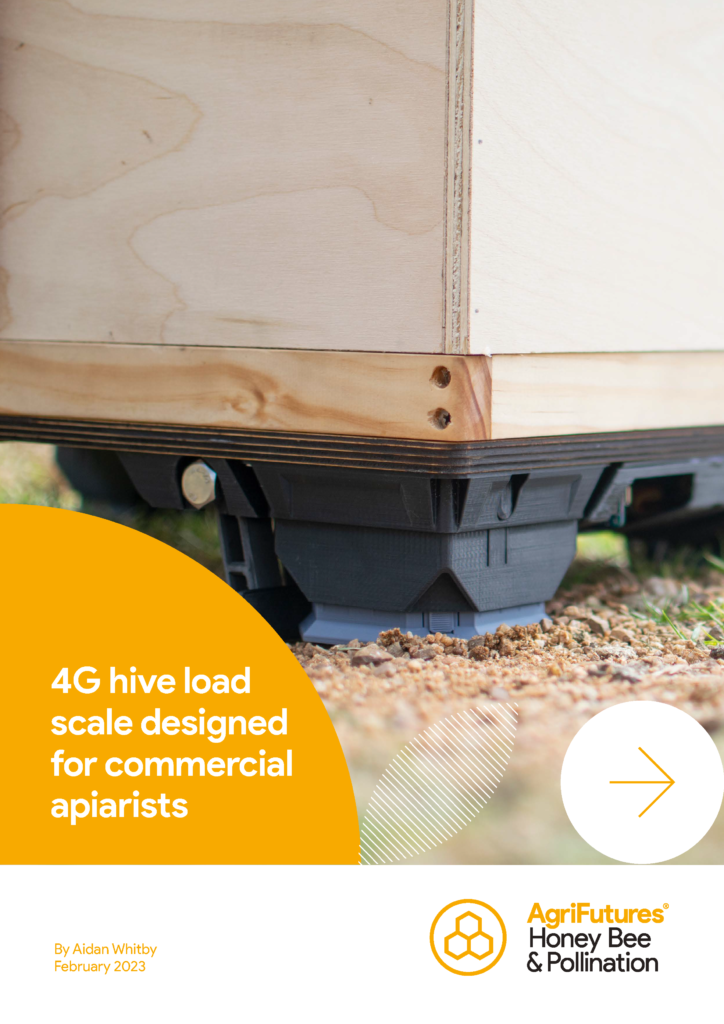Australia’s 1,800 commercial beekeepers travel vast distances to produce 20,000 tonnes of honey and pollinate 35 agricultural crops annually. With increasing input costs being countered by decreasing technology costs, a simple solution can be to monitor hives remotely. How to monitor hives with technology is a developing space, and understanding beekeepers’ needs is an important aspect overlooked by some tech developers.
Monitoring hives in a simple and cost-effective way without data ‘noise’ will allow beekeepers to understand how hives are performing without having to travel long distances to check on them. A variety of metrics can be used when monitoring hives, but only hive weight will inform beekeepers when the hive is ready to harvest. Hive weight can also be used to understand whether a hive is performing poorly, sick or empty.
This project, part of a Bachelor of Industrial Design (Honours) degree, developed a 4G hive load scale for commercial apiarists. The project included prototyping, manufacturing samples, user interface development for an app and an extensive design process to ensure the product delivers what apiarists require.
While there are other products in the market that enable hive monitoring, their developers lack understanding of what apiarists need. They are expensive, hard to use and have large reoccurring costs. This project used off-the-shelf technology that is relatively affordable to create a durable, ergonomic and effective product that meets the needs of industry.





